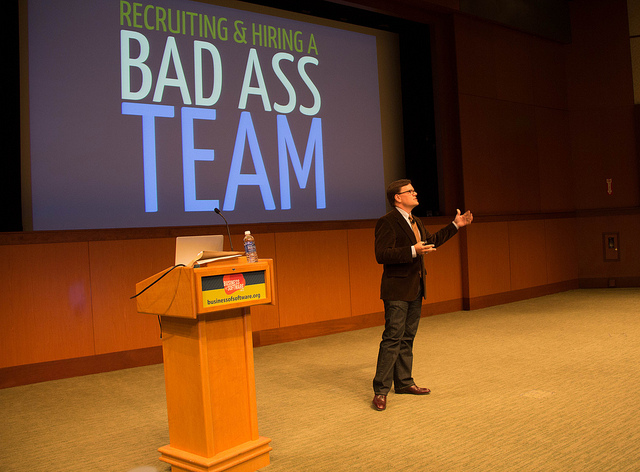
Accountability is a very interesting topic. When engaged by the CEO, one of the top wish list items for the company to accomplish is the issue of No Accountability. My response to this is, “I bet within one week, your team will be asking for Accountability and they will resort to their own measures.” I usually get a funny look as the CEO nods yes, but in reality they are saying inside their heads: “That is impossible”… “Not my team.” Why is there this disconnect regarding Accountability between the CEO and the rest of the company?
When launching a new client, one of the first things we do is what we call ‘Innerviews.’ We Innerview select employees from the senior team, key players in the company, and anyone in particular that the CEO would like included. These Innerviews allow for the company to be seen through the employees’ lens. We are not simply interviewing the employee, but rather engaging with them on a peer-to-peer level and asking a few simple, yet powerful, questions. These Innerview questions include:
- Why did you start working here? Why are you still here?
- What frustrates you the most? Drives you crazy? Repetitive things?
- How would you rate teamwork from 1 (bad) to 10 (awesome)?
- How would you rate the morale/spirit of the company 1 to 10?
- How would you rate communication from 1 to 10?
- How would you rate leadership from 1 to 10? This is really a self-rating.
NOTE: Whatever the rating is above, I always ask what it would take to get it closer to a 10. This is where the REAL content I’m looking for comes from. Rather than complaining about teamwork, what would actually improve it?
The BIG Innerview questions are:
- If you were CEO for 90 days, what three things would you do?
- What are the ‘undiscussables?’ What is below the waterline that everyone knows about, but is not safe to talk about?
Notice the one question I did not ask is about Accountability. Accountability is the ‘red thread’ that links everything together during the Innerview. What tends to frustrate team members the most is the lack of Accountability and follow through by other team members. They can’t do their job right because other people are not doing their job right or following through on commitments. Basically, your employees are as frustrated as you are.
How can the issue of Accountability be resolved? You can start by including your team during your strategic and execution planning. Let them help finalize company goals and priorities vs just assigning them out. Let them work through the steps and tasks to make them happen. Let them decide who is accountable for each step. Give your team a chance to volunteer to own the company Race Plan by determining goals, priorities, and tasks… They will.



 Performance reviews suck for so many reasons. Entrepreneurs avoid them, because there are way too many other things to do. Managers rarely do them right, and if they do, they don’t prepare properly. Employees hate them because they usually are tied to negative things and money. They usually happen only once a year … if they happen.
Performance reviews suck for so many reasons. Entrepreneurs avoid them, because there are way too many other things to do. Managers rarely do them right, and if they do, they don’t prepare properly. Employees hate them because they usually are tied to negative things and money. They usually happen only once a year … if they happen.







 I get asked all the time what is the number one thing a company can do to leverage the Rockefeller Habits and tighten up execution. Daily and Weekly meetings are often unstructured, boring and push aside in most companies but are the quickest way to solve problems quickly and get more work done. I’m assuming you ARE holding your Monthly, Quarterly and Annual meetings.… right? Your meeting rhythm is like the heartbeat of the organization that supplies blood and oxygen to the rest of the company. Without it, issues don’t get uncovered, processes don’t get cleaned up, execution/accountability fades away and key strategic initiatives and adjustments don’t get made. In short, hundreds or of decisions that should be leveraging the collective minds of the organization on an annual basis just never happen. Your company’s success can be equated to the sum total of all the decisions, both good and bad, that happen in a year.
I get asked all the time what is the number one thing a company can do to leverage the Rockefeller Habits and tighten up execution. Daily and Weekly meetings are often unstructured, boring and push aside in most companies but are the quickest way to solve problems quickly and get more work done. I’m assuming you ARE holding your Monthly, Quarterly and Annual meetings.… right? Your meeting rhythm is like the heartbeat of the organization that supplies blood and oxygen to the rest of the company. Without it, issues don’t get uncovered, processes don’t get cleaned up, execution/accountability fades away and key strategic initiatives and adjustments don’t get made. In short, hundreds or of decisions that should be leveraging the collective minds of the organization on an annual basis just never happen. Your company’s success can be equated to the sum total of all the decisions, both good and bad, that happen in a year.
